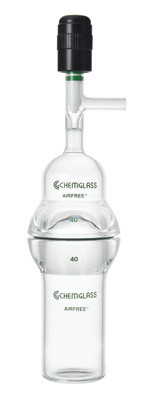| The Home page of ILPI's Safety Data Sheet (SDS) Resource, the leader in SDS information since 1995! | |
| The history and philosophy behind this resource. | |
| A curated collection of books and reference materials concerning Safety Data Sheets and closely related topics. | |
| Paste your plain text SDS into the SDS-Demystifier, and it will be converted into a hypertext-enriched document with links to detailed explanations of each key term. | |
| An extensive list of frequently asked questions about Safety Data Sheets including regulations, content, compliance, and more. | |
| A humorous take on Safety Data Sheet jargon. Fill in the blanks on our entry form to generate a personalized Unsafety Data Sheet to share with your coworkers. | |
| Since 1995, we've maintained this massive curated list of the best places to find Safety Data Sheets on the Internet. | |
| You are here! Way more than a glossary, this hypertext-enhanced resource covers hundreds of SDS-related terms and expert knowledge. Each entry includes both the SDS relevance and links to additional authoritative resources. | |
| Archived results of Safety Data Sheet related polls taken by some of our millions of site visitors | |
| The OSHA regulations behind SDS regulations, including the inspection guidelines and over 400 official interpretations letters under the Hazard Communication Standard | |
| Commercial suppliers of SDS authoring and management software as well as cloud compliance services. | |
| Commercial companies that will create SDS's for your specific needs as well as SDS translation companies. |

Safety signs, banners, and scoreboards? Get yours at Safety Emporium!
Definition
An anhydrous material does not contain any water (H2O) molecules.
Additional Info
Many substances occur naturally as hydrates, compounds that have a specific number of water molecules (H2O) attached to them. This water can often be removed by heating and/or vacuum to give the anhydrous material.
Anhydrous materials can absorb water from their surroundings and find use as desiccants (drying agents). Examples include the packets of silica gel one finds in some consumer goods, as well as dehumidifying sachets used in clothes closets. See our entry on hygroscopic for more details.
Anhydrous materials differ from anhydrides. Anhydrides react irreversibly with the oxygen-hydrogen bonds of water to form new compounds whereas anhydrous compounds simply form reversible adducts with water molecules.
The hydrated forms of the compounds shown below can be converted into the anhydrous forms by heating. This provides a convenient way of recycling (regenerating or reactivating) the drying agent. In each example below, note the double arrows between the products and reactants that indicate a reversible chemical reaction.

A commonly used chemical is anhydrous ammonia (NH3) which is ammonia in its pure form and has very different properties and uses than its aqueous form; see our amine entry for more details.
SDS Relevance
Some anhydrous materials are considered water reactive materials, meaning that they could release a large amount of heat possibly leading to a pressure or chemical explosion. Water reactive materials will note this in Section 10 (stability and reactivity) of the Safety Data Sheet. Use such materials only with proper precautions and training and pay very careful attention to the firefighting procedures listed in Section 5 of the SDS.
Further Reading
- Drying Organic Solutions at CU Boulder. Check out the great pictures.
- Drying an organic solvent with anhydrous magnesium sulfate and Use of a desiccator at YouTube.
- Selecting the Right Desiccant at AGM Container Controls.
- Common desiccant types and additional information at SorbentSystems.com.
- Multisorb has product information on a wide variety of desiccants.
See also: anhydride, hygroscopic.
